

Top 10 challenges that 2023 will bring to micromobility operators
Top 10 challenges that 2023 will bring to micromobility operators
Micromobility is set to expand in 2023, but the year will add extra challenges for mobility operators. Before, the market was all about growth. But as the market matures, profitability is becoming more important. Despite this shift, there are still many growth opportunities for mid-sized shared mobility companies!
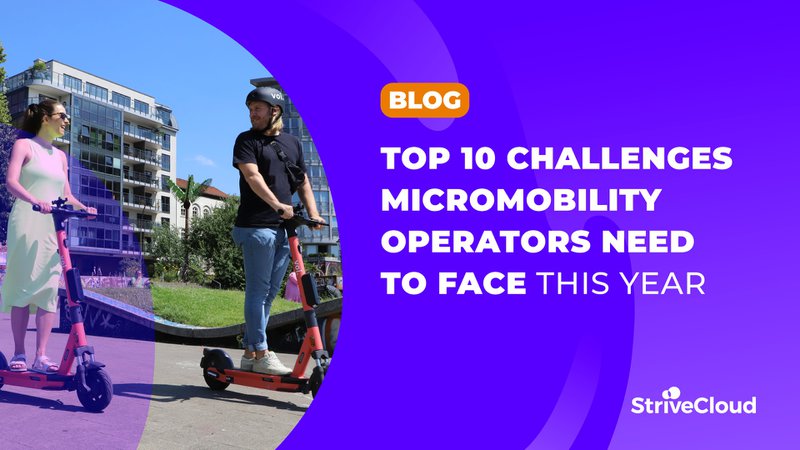
In this article, let’s explore the top 10 challenges in micromobility today - and how you can overcome them to achieve sustainable growth.
- A quick look at micromobility in 2023
- Top 10 challenges for micromobility operators (and where to find growth)
- 3 tools to combat the challenges in micromobility
- FAQs
A quick look at micromobility in 2023
Over the past few years, micromobility has experienced incredible growth. In 2020, the global e-scooter mobility market was valued at $1.17 billion. In 2022, that number rose to $1.5 billion. But 2023 will bring some significant challenges.
What’s different in 2023?
Many mobility operators have been growing at the expense of their profitability. But now that economic conditions are changing, that’s a big problem. In short, the easy money has vanished. Post-pandemic, venture funds now want to see operators with a reliable cash flow.
From the pandemic to an economic downturn
Take market-leading e-scooter operator Bird for example. Last year, in an effort to become more profitable, the mobility operator laid off 23% of their staff and pulled out of Sweden, Germany, and Norway. On the other side of that, companies that aren’t scaling down are simply being bought out. In March 2022, Berlin-based Tier Mobility bought e-scooter operator Spin.
Top 10 challenges for micromobility operators (and where to find growth)
#1 City authorities are getting more involved
Why are cities interested in micromobility? Well, cities want to reduce traffic and meet climate change goals. But authorities are also finding that micromobility makes economic sense too. In 2019, Copenhagen officials reported that the city earns €0.64 for every kilometer traveled by micromobility, yet it loses €0.71 for those traveling by car.
As a result, authorities are regulating micromobility to meet their needs. For instance, Paris allows only 3 mobility operators. And because Paris is such a lucrative market - home to 1.2 million e-scooter riders in 2022 - this gives the city the power to implement rules like speed limits and mandatory parking bays without mobility operators leaving.
But working with city authorities can also create opportunities for a successful partnership. Research shows that when cities build new infrastructure such as bike lanes, micromobility ridership jumps by as much as 48%.
#2 Stiff competition makes it hard to differentiate your brand
Not every city is as regulated as Paris. Indeed, Brussels is home to 7 e-scooter mobility operators. This makes it extra hard to differentiate your brand. To an average consumer, the only thing that seems to separate these companies is the color of the scooter!
To set your product apart in a profitable way, you must create a unique brand identity and customer experience. When you look at Lime, they play on their innovation. But Voi prefers to lead with convenience, offering a way to travel “conveniently without compromising the environment”.
#3 Age restrictions can keep young people away
Young people are a valuable target market. A Dutch study found that young consumers are more likely to adapt to new mobility habits and are less likely to already own a car. But many lawmakers have introduced age restrictions on riding e-scooters. In places like The Netherlands and Spain, you must be at least 16 to ride an e-scooter.
For mobility operators, this can mean performing a balancing act. While you must prevent young people from accessing a scooter, you don’t want to tarnish your brand in the process and appear inaccessible. After all, these young consumers will eventually become of age. To be sure, solving this challenge can help you lock in a future audience.
#4 Keeping customers engaged over a longer time period
In micromobility, the extent of a customer’s relationship with you often stops when they park up. But you can go further than that. You want to stay top-of-mind whenever customers need a way to get around. One way to do that is through a gamified loyalty system. Voi for instance promises riders they can “ride more, pay less”.
#5 It’s tough to stay top of mind
When cities offer so many mobility options, how can mobility operators remain both a viable and prominent choice? Clearly, it’s not feasible to put a scooter on every corner. One way to stay top of mind is with a powerful, holistic brand message like HumanForest. The app is all about sustainability, and it gets this across with things like gamified in-app coins that represent how many trees worth of CO2 you have saved. Now that’s a positive feeling that customers can take away with them!
#6 Fleet management eats into your time and budget
When your scooters are scattered randomly all over the city, that’s a recipe for low rates of vehicle utilization. In the end, this brings down your profit and perceived availability. Market studies find that for a typical ride costing €3.50, around €1.70 of that total goes to operations and charging.
How do you solve this? Some mobility operators, like Streetcrowd, are overcoming the problem by rewarding customers for parking vehicles in more optimal locations.
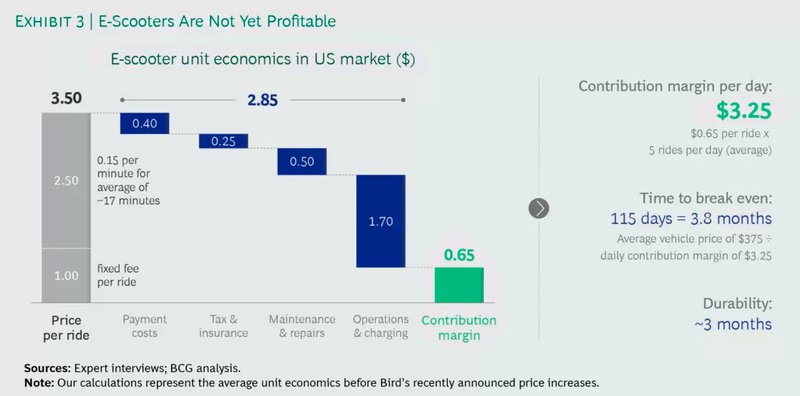
This graph illustrates how a significant portion of revenue is consumed by operational costs, highlighting the industry's profitability challenges.
#7 The struggle for profitability
According to a 2021 report by North American transport officials, the price of a micromobility trip has more than doubled since 2018. Despite this, profit margins have actually gone down. The expensive nature of this market along with the steep competition makes it nearly impossible for mobility operators to compete on price.
Naturally, this drives the push for profitability. Luckily, a great customer uexperience can help you both attract new (and younger) audiences, but also build a loyal customer base. After all, loyal customers spend more and more often!
How to drive profitability? Boost total revenue per customer with your own gamified loyalty program! Get inspired by these real-life examples!
#8 People are buying their own vehicles
Cheaper and better scooters are great for everyone. But it presents another challenge for mobility operators. People across Europe are buying their own private vehicles. In France, private scooter ownership shot up 42% between 2020 and 2021. Your marketing could play on the challenges that come with owning or using your own vehicle. Such as parking, insurance, or maintenance.
#9 Getting people to change their mobility habits
At the end of the day, people just want a safe, fast, and convenient way to get from A to B. As a result, people are unlikely to choose you if their destination is too far, public transit is faster - or worse if a competitor has a vehicle closer by.
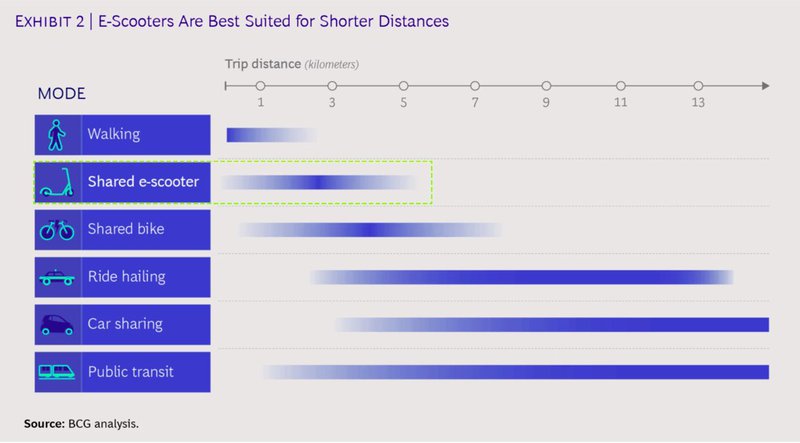
To incentivize people to change habits, you need to do some habit-forming of your own! By rewarding customers whenever they use your mobility service, you create a positive reinforcement loop, leaving them wanting more. You basically incentivize people to take more rides. For example, by rewarding customers through points that they can exchange for free riding minutes. Why would they not use their free-riding minutes the next time?
With gamification, that goes beyond just discounts! You can introduce elements such as leaderboards, challenges, and leveling systems to build an active customer base. HumanForest for instance has built a community of CO2 savers using gamification.
#10 Providing direct and instant customer support
The past few years have changed customer support drastically:
- 75% of consumers plan to keep using new channels like live chat since trying them for the first time during the pandemic
- 76% of consumers want phone support when dealing with complex issues like product malfunctions
- 54% of high-performing companies have seamless omnichannel support, compared to just 20% of low-performing companies
What does this mean for mobility operators? While customer support can be costly - by some estimates it can set you back 10-15% of revenue - it is a crucial part of your service. Learning to be proactive, for example by spotting faulty scooters before they crop up during a customer’s journey, can both reduce costs and foster customer loyalty.
3 tools to combat the challenges in micromobility
StriveCloud
StriveCloud is a gamified loyalty platform designed to help mobility operators sell more trips. Differentiate yourself from competitors with in-app rewards that incentivize customers to keep coming back. The variety of fun features like challenges, leaderboards, or levels will improve the experience and help you to stay top-of-mind whenever customers need a ride!
Michael Stewart @HumanForest - "What’s really unique about StriveCloud compared to a regular loyalty program or customer marketing is that your customer’s experience is inside the app, at the moment they are using it. That really helped us fulfil our brand message, in a fun and engaging way."
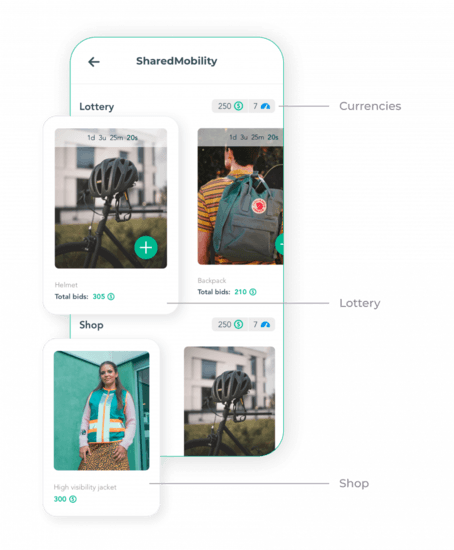
The StriveCloud platform provides an array of gamified features designed to enhance user engagement within a mobility app.
Use in-app rewards to boost the number of trips per customer! Discover how our gamified loyalty software helps mobility operators achieve sustainable growth.
ElectricFeel
Based in Switzerland, ElectricFeel lets you run everything you need for your business from one dashboard. With the ability to control your fleets in real-time, issues like fleet rebalancing become less of a snag.
Wunder Mobility
Wunder Mobility is a complete white-label solution to help vehicle-sharing companies, launch, manage, and scale their operations. Whether you’re using scooters, mopeds, bikes, or cars, Wunder has got you covered! To this day, over 40 million rides have been shared in 200+ cities!
What makes Wunder Mobility even better is its library of integrations & add-ons designed to improve your vehicle-sharing service! We should know, check out our integration with Wunder here!
FAQs
Why will 2023 bring up challenges for mobility operators?
Many mobility operators have historically focused more on growth than profitability. Now that economic conditions are changing, that’s a problem. In short, the easy money has vanished. Post-pandemic, venture funds now want to see operators with a reliable cash flow.
How can mobility operators work with city authorities to grow?
City officials know that micromobility journeys actually make them more money, especially compared to car journeys. Given this, mobility operators should be partnering with cities to encourage the building of new infrastructure which can boost micromobility ridership by as much as 48%.
How can micromobility platforms make using their app a habit?
To promote habit formation, use the power of gamification. Features like points, levels, and leaderboards can create ‘intrinsic motivation’. This is when customers want to use your app because they feel rewarded and satisfied. Studies show that this promotes habit formation!
Related Posts
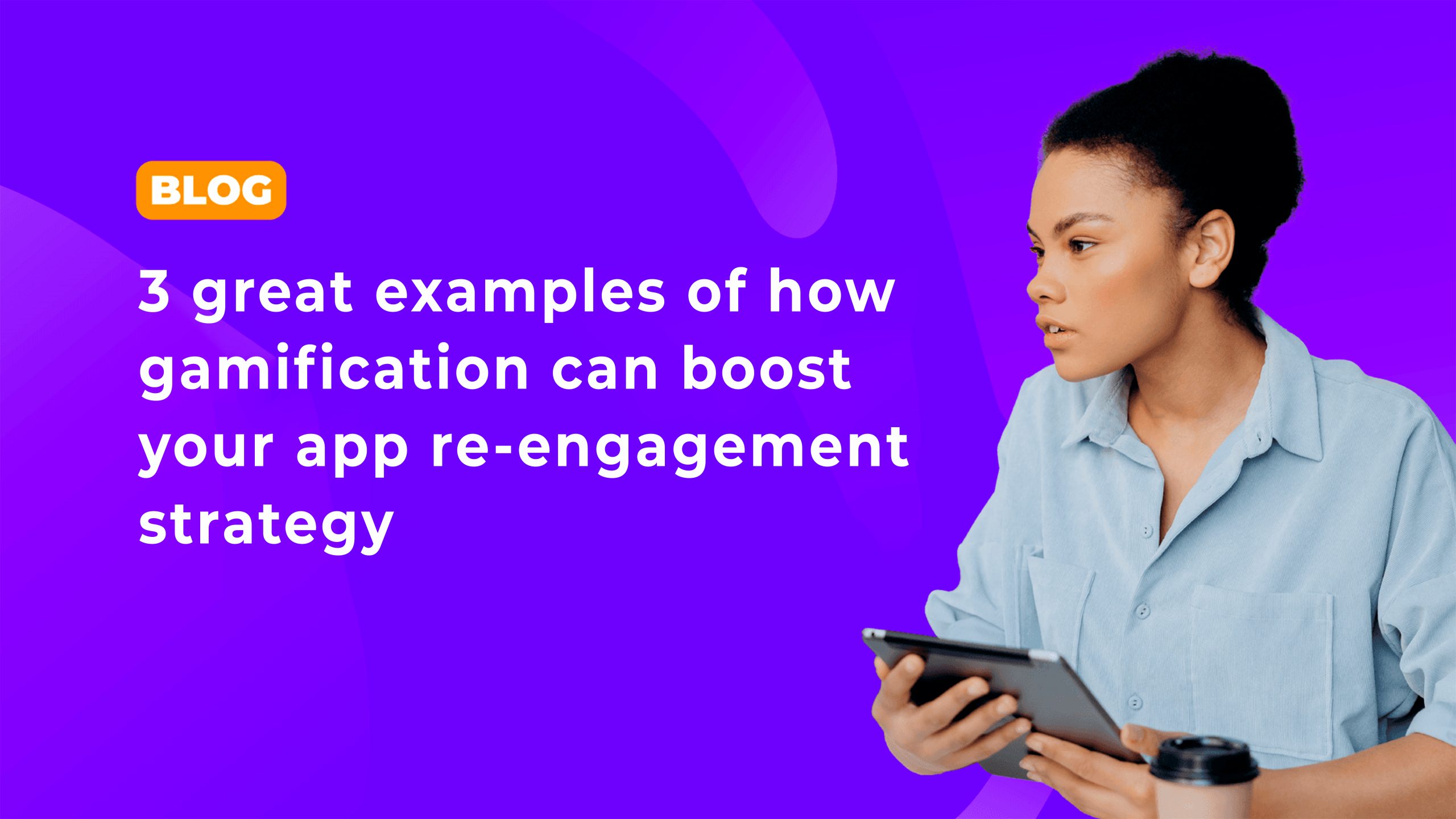
3 great examples of how gamification can boost your app re-engagement strategy
User acquisition costs are on the rise. In 2021, it cost on average $1.22. Given this, user retention is more important than ever, and one of the best things you can do to improve it is to optimize your re-engagement strategy. Read on to get started!
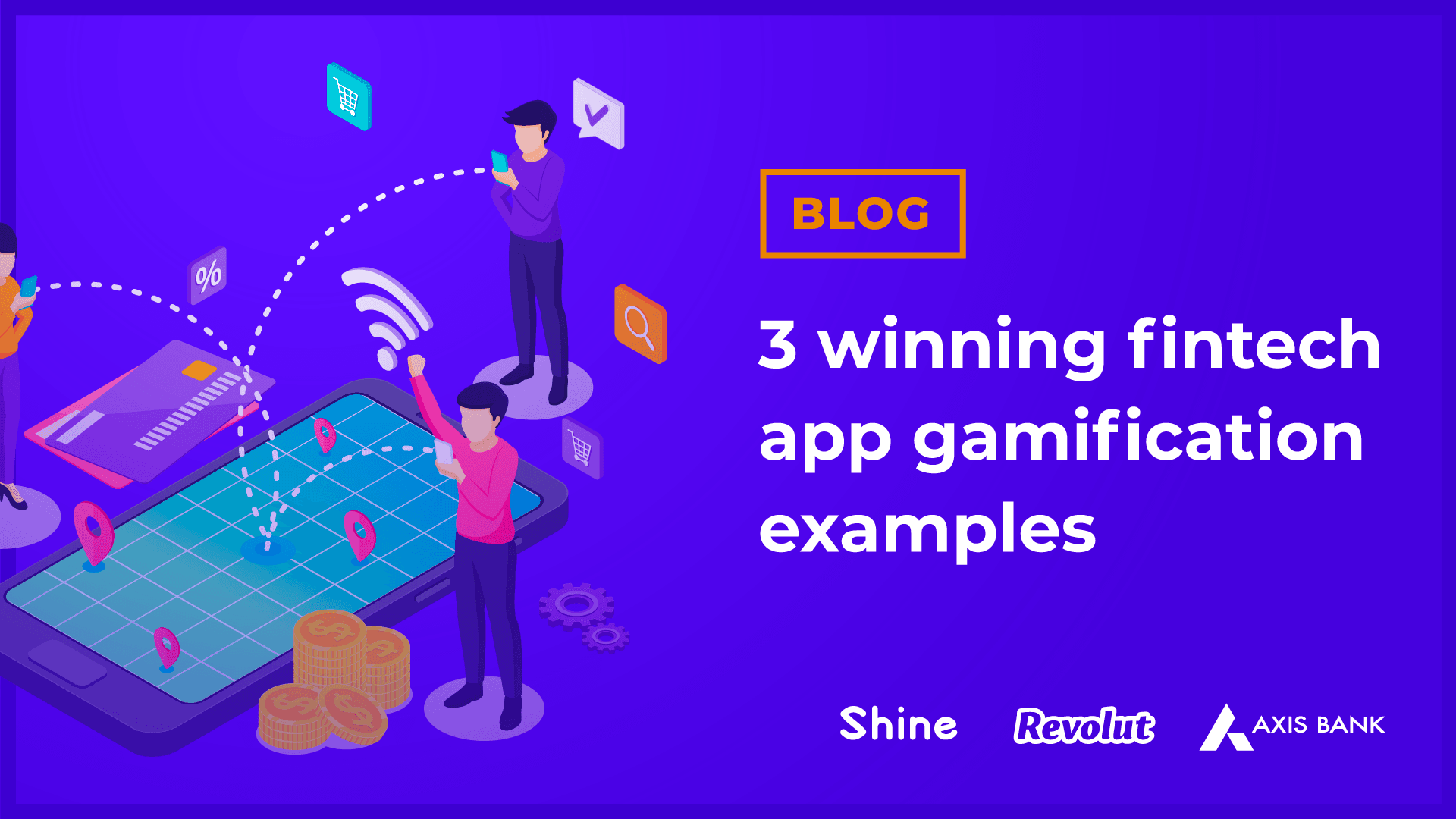
How fintech is using app gamification and 3 of the best examples
Research shows that in fintech apps just 15% of users finish the onboarding. But with app gamification, apps like Shine see that 80% of users complete the onboarding! The change is huge, and banks old and new are taking notice of how important mobile app engagement is to success. Here's how they crack it.

